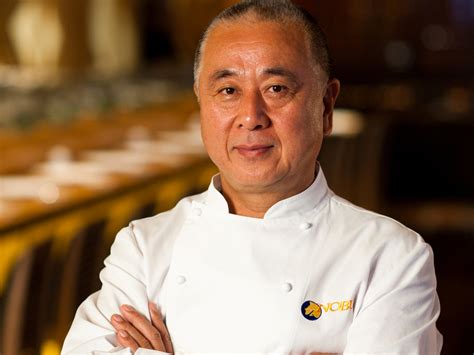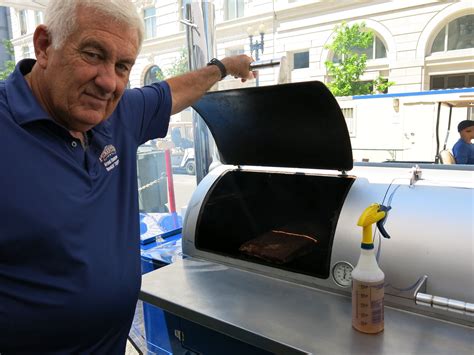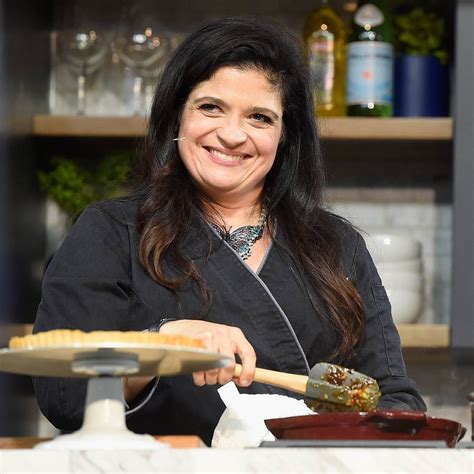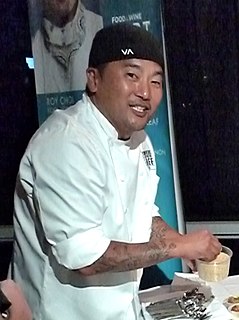A Quote by Nobu Matsuhisa
I can't imagine Japanese food without dashi, a broth made with kelp and dried bonito flakes. It has the aroma of the sea, tinged with a subtle smokiness, and adds a very important, distinct flavor.
Related Quotes
You are eating the sea, that's it, only the sensation of a gulp of sea water has been wafted out of it by some sorcery, and you are on the verge of remembering you don't know what, mermaids or the sudden smell of
kelp on the ebb tide or a poem you read once, something connected
with the flavor of life itself.
Adding two or three chunks of wood to the coals adds a great smoke flavor to meat. I prefer pecan wood, which adds a mellow smoke flavor, but any good wood will work. And most barbecue sections in stores and supermarkets around the country, like Walmart, sell hickory wood, which adds a heavier smoke flavor. Oak is also a good option for a mellow smoke flavor.
Asian food is very easy to like because it hits your mouth very differently than European food does. In European food, there may be two things to hit - maybe sweet and salty, maybe salty-savory, … but Asian kind of works around, plus you have that distinct flavor that’s usually working in Asian food.



































